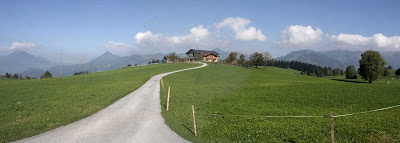
This is the current state of my left hand which will be under wraps for the next couple of weeks. I have been given 2 weeks supply of painkillers and am slightly concerned that I dont really need them. As you can see the NHS do a fine job of bandageing - they hd a bit of trouble with the sling though. They are not allowed to use safety pins so it looked a bit of a mess until I got home where we are not governed by health and safety issues. I think that I am going to start a political party whose manifesto is to disband the H&S Executive so we can all be treated as sensible human beings. The human race is known (in latin) as homo sapiens sapiens - this means wise, wise man - I don't think so.
I don't think this blog has much to do with photography, but, as I may have said before everything I write in this blog is my own opinion and is derived from years of experience.
You may like to know why my hand is bandaged up. Well it has been operated on for a condition called Dupuytrans Contractor. My fingers were curling in towards the palm as the tendons had developed a growth surrounding them. The nice people at Charing Cross H{ospital seem to have done an excellent job and my thanks go out to the team on the 7th floor that looked after me for the day. The consultant was Mr Forester and if you ever need it done I would recommend him. The dupuytrans.co.uk web-site like to make it clear to everybody that you must choose your surgeon with care as not all surgeons are up to the delicate surgery involved in working on the hand - which has more bones, tendons, nerves and blood vessels than practically any other part of the body.
 When I checked in to physio they gave me an appointment for tomorrow. I had to come home with it as you see it. Not a pretty sight.
When I checked in to physio they gave me an appointment for tomorrow. I had to come home with it as you see it. Not a pretty sight.  When I checked in to physio they gave me an appointment for tomorrow. I had to come home with it as you see it. Not a pretty sight.
When I checked in to physio they gave me an appointment for tomorrow. I had to come home with it as you see it. Not a pretty sight. 



























